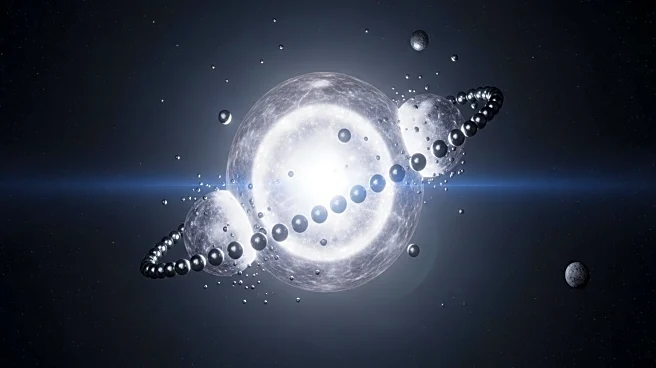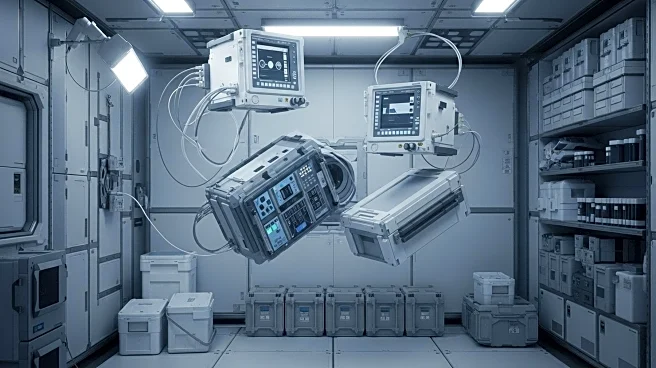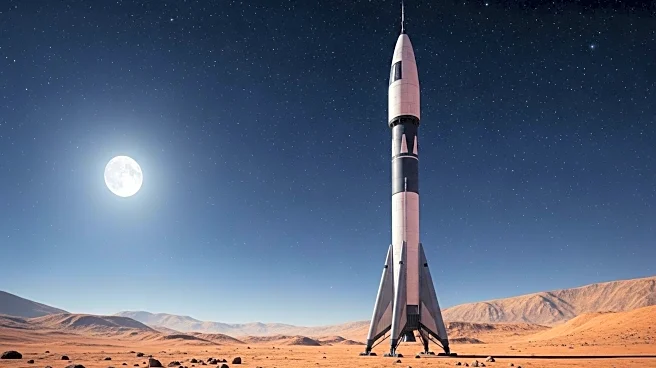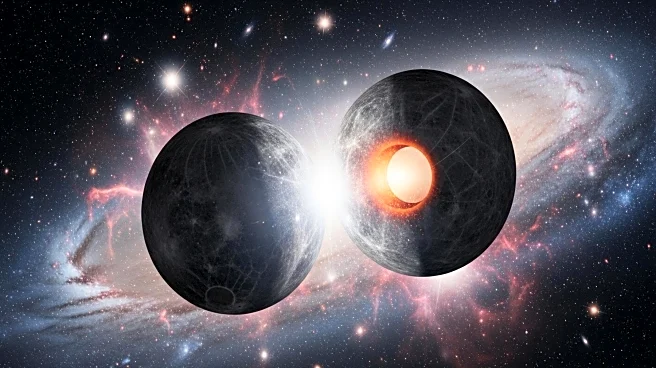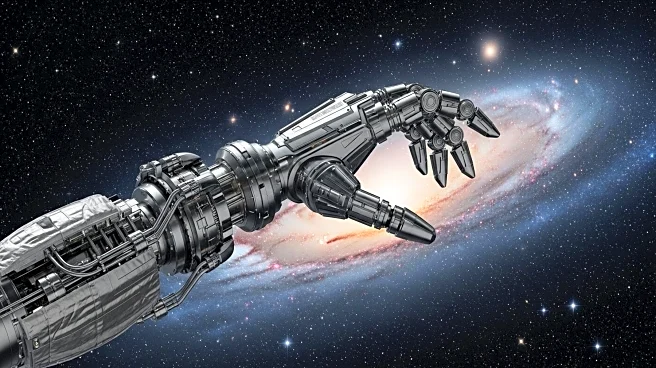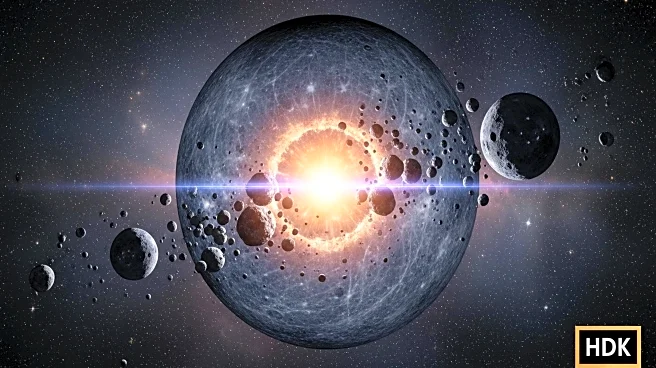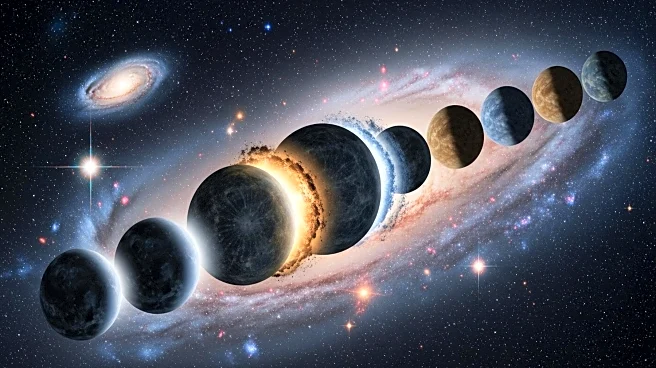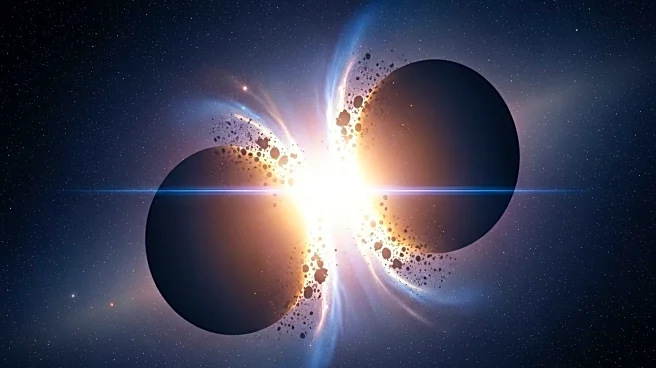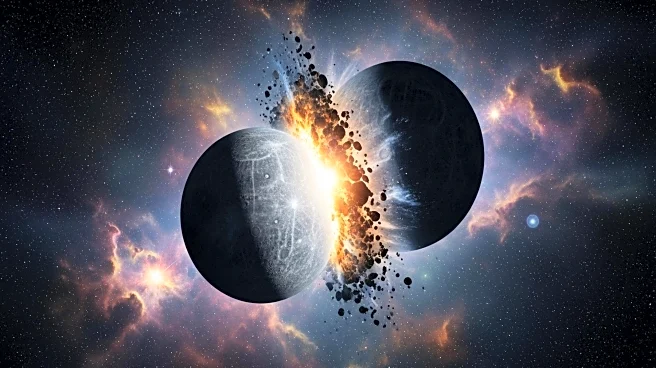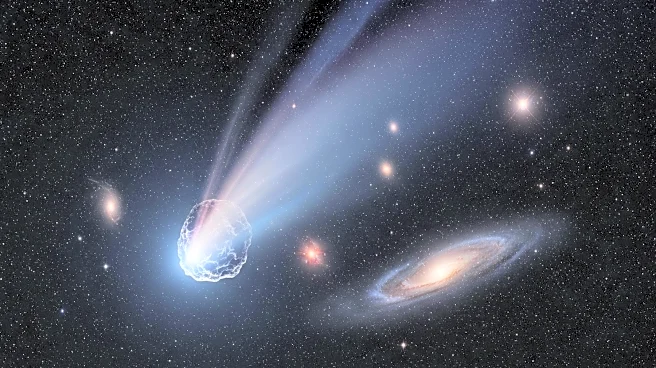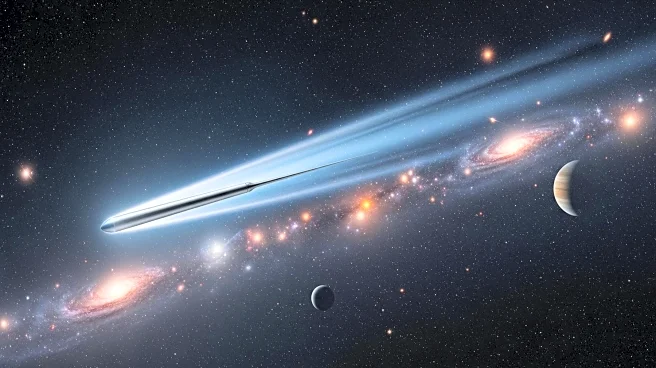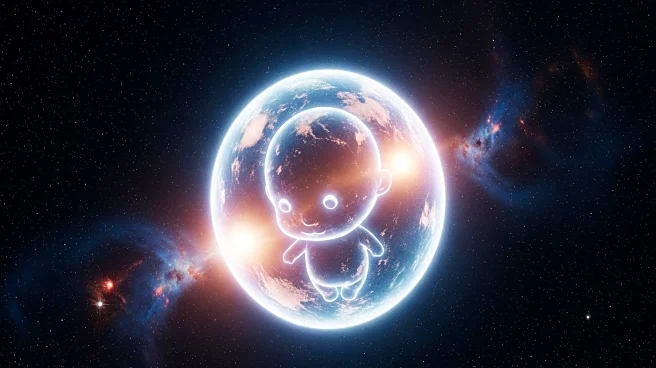What is the story about?
What's Happening?
Recent research published in Nature Astronomy proposes a new explanation for Mercury's unusually large core, a phenomenon known as the 'Mercury Problem.' Historically, it was believed that Mercury's core, which constitutes about 70% of its mass, resulted from a collision with a significantly larger object. However, new simulations suggest that a grazing collision with a similar-mass object could account for Mercury's current structure. This hypothesis challenges previous models that required rare, high-mass collisions. The study, led by Patrick Franco from the Institut de Physique du Globe de Paris, utilized smoothed particle hydrodynamics simulations to demonstrate that such a collision could strip away much of Mercury's mantle, leaving its core disproportionately large.
Why It's Important?
This new understanding of Mercury's formation could reshape scientific perspectives on planetary development in the early Solar System. By suggesting that collisions between similar-mass objects were more common, the research provides a more statistically plausible scenario for Mercury's current state. This insight not only addresses the 'Mercury Problem' but also enhances the broader understanding of planetary formation dynamics. The findings could influence future planetary exploration missions and the interpretation of data from existing missions like ESA/JAXA's BepiColombo, which aims to study Mercury's core and magnetic fields. Such research could have implications for understanding other celestial bodies with unusual compositions.
What's Next?
The ESA/JAXA BepiColombo mission, set to reach Mercury in 2026, will play a crucial role in testing this new hypothesis. Equipped with over 20 scientific instruments, the mission will provide detailed measurements of Mercury's core and magnetic fields. These data could confirm or challenge the new collision model. Additionally, further geochemical studies of meteorites and potential sample return missions from Mercury could offer more insights. The research community anticipates that these efforts will significantly advance the understanding of Mercury and similar planetary bodies.
Beyond the Headlines
The study's implications extend beyond Mercury, offering a new lens through which to view planetary formation. The idea that similar-mass collisions were common in the early Solar System could lead to reevaluations of other planets' histories. Moreover, the research highlights the importance of interdisciplinary approaches, combining simulations with observational data, to solve longstanding astronomical puzzles. As exploration technology advances, the potential for new discoveries about planetary formation and evolution continues to grow.
AI Generated Content
Do you find this article useful?
